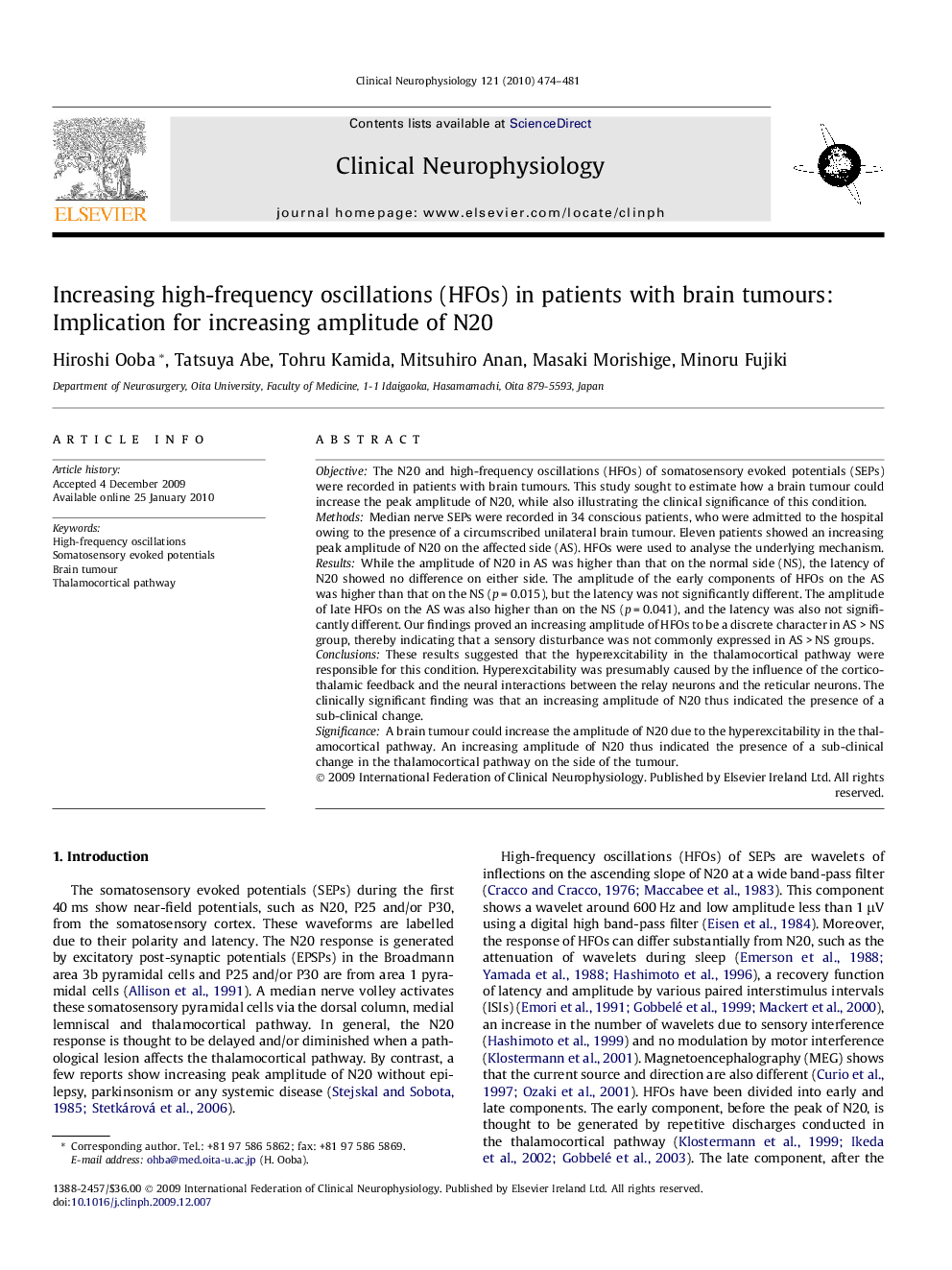| Article ID | Journal | Published Year | Pages | File Type |
|---|---|---|---|---|
| 6009187 | Clinical Neurophysiology | 2010 | 8 Pages |
ObjectiveThe N20 and high-frequency oscillations (HFOs) of somatosensory evoked potentials (SEPs) were recorded in patients with brain tumours. This study sought to estimate how a brain tumour could increase the peak amplitude of N20, while also illustrating the clinical significance of this condition.MethodsMedian nerve SEPs were recorded in 34 conscious patients, who were admitted to the hospital owing to the presence of a circumscribed unilateral brain tumour. Eleven patients showed an increasing peak amplitude of N20 on the affected side (AS). HFOs were used to analyse the underlying mechanism.ResultsWhile the amplitude of N20 in AS was higher than that on the normal side (NS), the latency of N20 showed no difference on either side. The amplitude of the early components of HFOs on the AS was higher than that on the NS (p = 0.015), but the latency was not significantly different. The amplitude of late HFOs on the AS was also higher than on the NS (p = 0.041), and the latency was also not significantly different. Our findings proved an increasing amplitude of HFOs to be a discrete character in AS > NS group, thereby indicating that a sensory disturbance was not commonly expressed in AS > NS groups.ConclusionsThese results suggested that the hyperexcitability in the thalamocortical pathway were responsible for this condition. Hyperexcitability was presumably caused by the influence of the corticothalamic feedback and the neural interactions between the relay neurons and the reticular neurons. The clinically significant finding was that an increasing amplitude of N20 thus indicated the presence of a sub-clinical change.SignificanceA brain tumour could increase the amplitude of N20 due to the hyperexcitability in the thalamocortical pathway. An increasing amplitude of N20 thus indicated the presence of a sub-clinical change in the thalamocortical pathway on the side of the tumour.
